Republic of Nicaragua
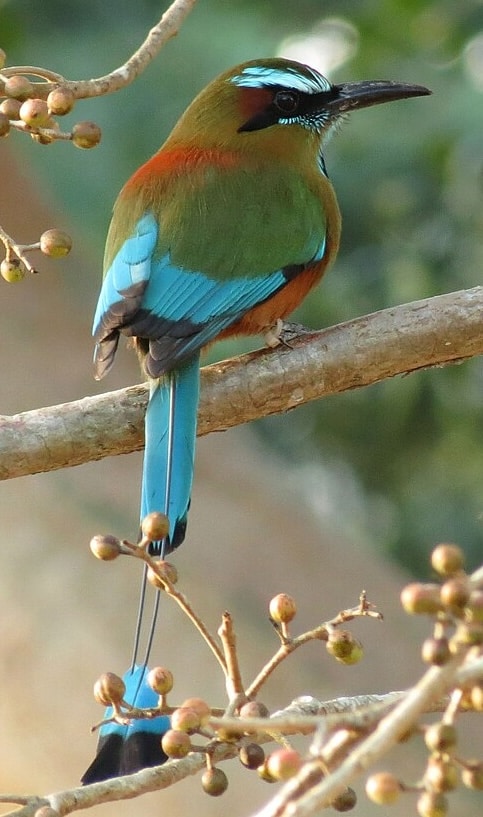
Nicaragua is the geographically largest country in Central America, comprising 130,370 km2 (50,340 square miles). With a population of around seven million people, it is the third-most populous country in Central America after Guatemala and Honduras. It is bordered by Honduras to the north, the Caribbean Sea to the east, Costa Rica and the Pacific Ocean to the south, and shares maritime borders with El Salvador to the west and Colombia to the east. The country’s largest city and national capital is Managua, the fourth-largest city in Central America, with a population of about 1,120,000. Nicaragua is known as ‘the breadbasket of Central America’ due to having the most fertile soil and arable land in all of Central America. Its multi-ethnic population includes people of mestizo, indigenous, European, and African heritage. The country’s most spoken language is Spanish, though indigenous peoples on the Mosquito Coast speak their own languages and English. The mixture of cultural traditions has generated substantial diversity in folklore, cuisine, music, poetry and literature.
Known as the ‘land of lakes and volcanoes’, Nicaragua is also home to the Bosawás Biosphere Reserve, the second-largest rainforest of the Americas. The biological diversity, warm tropical climate and active volcanoes have made Nicaragua an increasingly popular tourist destination. Nicaragua has three distinct geographical regions: the Pacific lowlands – fertile valleys, the Amerrisque Mountains (North-central highlands), and the Mosquito Coast (Atlantic lowlands/Caribbean lowlands).
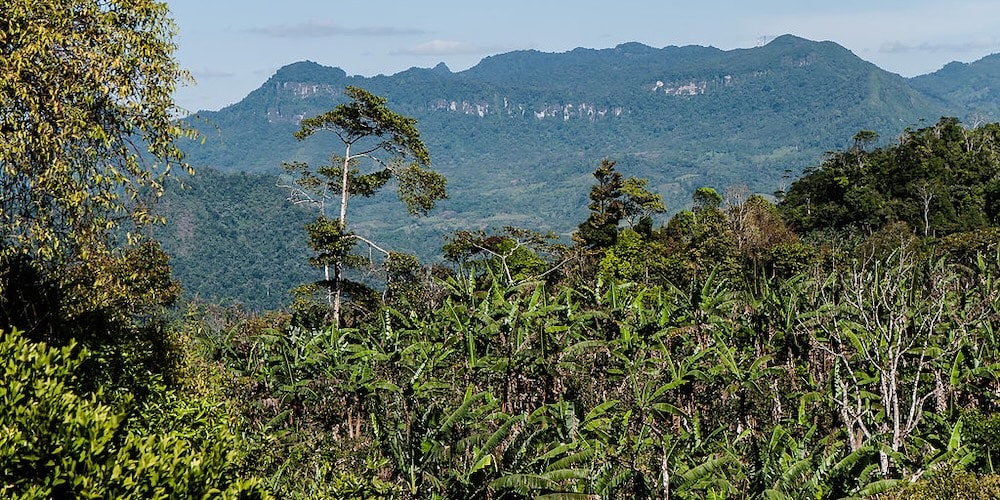
Bosawás Biosphere Reserve – ©Rebecca Ore CC BY-SA 3.0 via Wikimedia Commons
The low plains of the Atlantic Coast are 100 km wide in areas. On the Pacific side of Nicaragua are the two largest freshwater lakes in Central America – Lake Managua and Lake Nicaragua. Surrounding these lakes and extending to their northwest along the rift valley of the Gulf of Fonseca are fertile lowland plains, with soil highly enriched by ash from nearby volcanoes of the central highlands.
In the west of the country, these lowlands consist of a broad, hot, fertile plain. Punctuating this plain are several large volcanoes of the Cordillera Los Maribios mountain range, including Mombacho just outside Granada, and Momotombo near León. The lowland area runs from the Gulf of Fonseca to Nicaragua’s Pacific border with Costa Rica south of Lake Nicaragua. Lake Nicaragua is the largest freshwater lake in Central America (20th largest in the world) and is home to some of the world’s rare freshwater sharks (Nicaraguan shark). The Pacific lowlands region is the most populous, with over half of the nation’s population.
The eruptions of western Nicaragua’s 40 volcanoes, many of which are still active, have sometimes devastated settlements but also have enriched the land with layers of fertile ash. The geologic activity that produces vulcanism also breeds powerful earthquakes. Tremors occur regularly throughout the Pacific zone, and earthquakes have nearly destroyed the capital city, Managua, more than once.
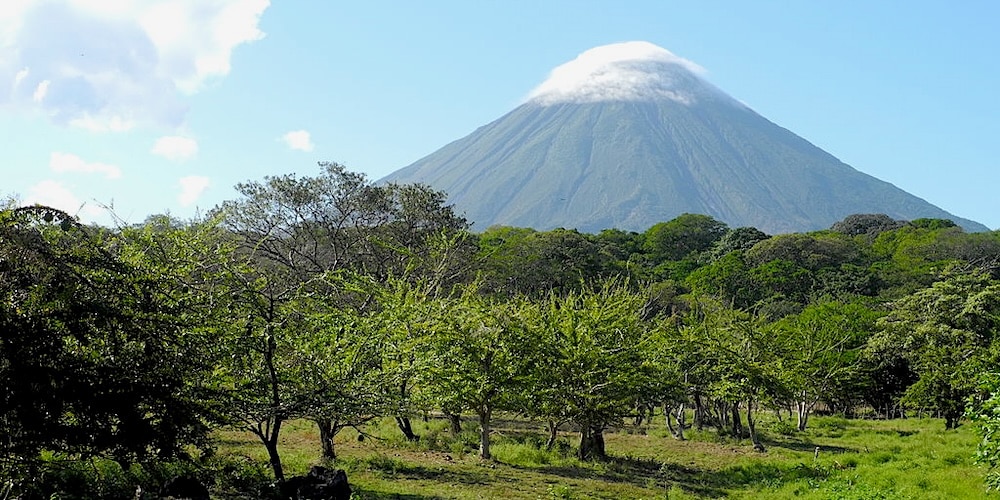
Concepcion Volcano – ©m.a.r.c. CC BY-SA 2.0 via Wikimedia Commons
Most of the Pacific zone is tierra caliente, the ‘hot land’ of tropical Spanish America at elevations under 2,000 feet. Temperatures remain virtually constant throughout the year, with highs ranging between 29 and 32 °C. After a dry season lasting from November to April, rains begin in May and continue to October, giving the Pacific lowlands 40 to 60 inches of precipitation. Good soils and a favourable climate combine to make western Nicaragua the country’s economic and demographic centre. The southwestern shore of Lake Nicaragua lies within 24 kilometres of the Pacific Ocean.
Northern Nicaragua is the most diversified region producing coffee, cattle, milk products, vegetables, wood, gold, and flowers. Its extensive forests, rivers and geography are suited for ecotourism. The central highlands are a significantly less populated and economically developed area in the north, between Lake Nicaragua and the Caribbean. Forming the country’s tierra templada, or ‘temperate land’, at elevations between 2,000 and 5,000 feet, the highlands enjoy mild temperatures with daily highs of 24 to 27 °C. This region has a longer, wetter rainy season than the Pacific lowlands, making erosion a problem on its steep slopes. Rugged terrain, poor soils, and low population density characterise the area as a whole, but the northwestern valleys are fertile and well settled. About a quarter of the country’s agriculture takes place in this region, with coffee grown on the higher slopes. Oaks, pines, moss, ferns and orchids are abundant in the cloud forests of the region. Bird life in the forests of the central region includes resplendent quetzals, hummingbirds and toucanets.
The Caribbean lowlands large rainforest region is irrigated by several large rivers and is sparsely populated. The area cover 57% of the nation and most of its mineral resources. It has been heavily exploited, but much natural diversity remains. The Rio Coco is the largest river in Central America; it forms the border with Honduras. The Caribbean coastline is much more sinuous than its generally straight Pacific counterpart; lagoons and deltas make it very irregular. Nicaragua’s Bosawás Biosphere Reserve is in the Atlantic lowlands, part of which is located in the municipality of Siuna; it protects 7,300 square kilometres of La Mosquitia forest – almost 7% of the country’s area – making it the largest rainforest north of the Amazon in Brazil.
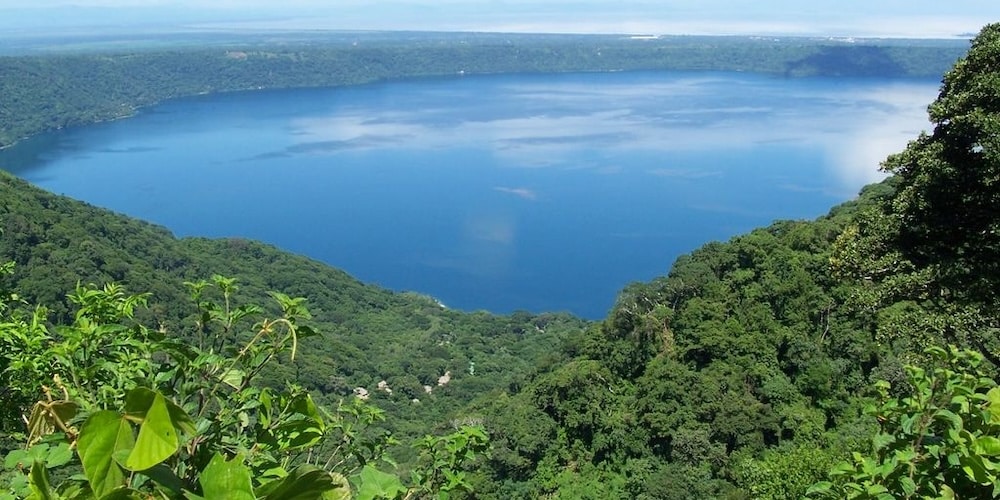
Laguna de Apoyo Nature Reserve – Zuluniga CC0 via Wikimedia Commons
Nicaragua’s tropical east coast is very different from the rest of the country. The climate is predominantly tropical, with high temperature and high humidity. Around the area’s principal city of Bluefields, English is widely spoken along with the official Spanish. The population more closely resembles that found in many typical Caribbean ports than the rest of Nicaragua. A great variety of birds can be observed including eagles, toucans, parakeets and macaws. Other animal life in the area includes several species of monkeys, anteaters and tapirs
Birding Nicaragua
Nicaragua is home to a rich variety of plants and animals. Nicaragua is located in the middle of the Americas and this location means the country is host to great biodiversity. This factor, along with the weather and light altitudinal variations, accounts for the variety such as 248 species of amphibians and reptiles, 183 species of mammals, nearly 800 bird species, 640 fish species, and about 5,796 species of plants.
Nicaragua’s abundance of biologically significant and unique ecosystems contribute to Mesoamerica’s designation as a biodiversity hotspot. Nicaragua has made efforts to become less dependent on fossil fuels, and it expects to acquire 90% of its energy from renewable resources. Nearly one fifth of Nicaragua is designated as protected areas like national parks, nature reserves, and biological reserves.
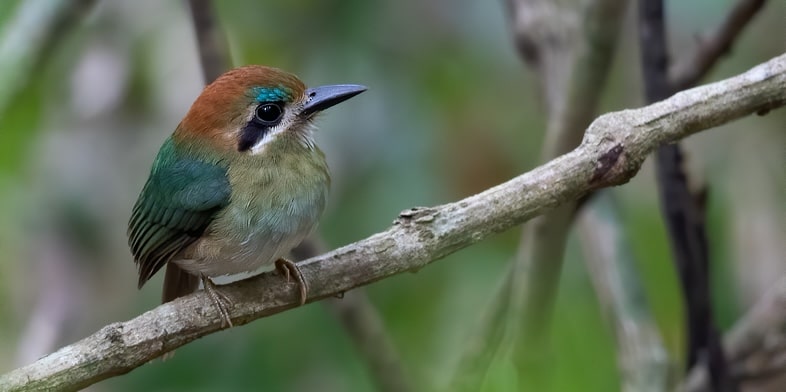
Tody Motmot Hylomanes momotula – ©Dubi Shapiro
There are currently 78 protected areas in Nicaragua, covering more than 22,000 square kilometres. These include wildlife refuges and nature reserves that shelter a wide range of ecosystems. There are more than 1,800 animal species classified thus far in Nicaragua. Some 12,000 species of plants have been classified thus far in Nicaragua, with an estimated 5,000 species not yet classified.
-
Wikipedia
GNU Free Documentation License
https://en.wikipedia.org/wiki/Nicaragua
-
Number of bird species: 792
National Bird: Turquoise-browed Motmot Eumomota superciliosa
Number of endemics: 1
Nicaraguan Grackle Quiscalus nicaraguensis
-
Avibase
PDF ChecklistThis checklist includes all bird species found in Nicaragua , based on the best information available at this time. It is based on a wide variety of sources that I collated over many years. I am pleased to offer these checklists as a service to birdwatchers. If you find any error, please do not hesitate to report them. -
E-Bird
PDF ChecklistThis checklist is generated with data from eBird (ebird.org), a global database of bird sightings from birders like you. If you enjoy this checklist, please consider contributing your sightings to eBird. It is 100% free to take part, and your observations will help support birders, researchers, and conservationists worldwide. -
Wikipedia
Annotated ListThis is a list of the bird species recorded in Nicaragua. The avifauna of Nicaragua included a total of 788 species as of May 2023, according to Bird Checklists of the World.[1] Of them, 142 are rare or accidental and five have been introduced by humans. None are endemic. An additional accidental species has been added from another source.
-
A Guide to the Birds of Panama with Costa Rica, Nicaragua, and Honduras
| By R S Ridgely & J A Gwynne | Princeton University Press | 1992 | Paperback | 534 pages, 48 colour plates, 53 line illustrations | ISBN: 9780691025124 Buy this book from NHBS.com -
Birds of Central America
| (Belize, Guatemala, Honduras, El Salvador, Nicaragua, Costa Rica, and Panama) | By Andrew Vallely & Dale Dyer | Princeton University Press | 2018 | Paperback | 560 pages, 260 plates with colour illustrations; 1190+ colour distribution maps | ISBN: 9780691138022 Buy this book from NHBS.com -
Birds of Nicaragua: A Field Guide
| By Liliana Chavarría-Duriaux, Robert Dean & David C Hille | Comstock Publishing Associates | 2018 | Paperback | 480 pages, colour illustrations, colour distribution maps | ISBN: 9781501701580 Buy this book from NHBS.com -
Guide to the Birds of Nicaragua
| By Juan Martínez-Sánchez, Liliana Chavarría-Duriaux & Francisco José Muñoz | VerlagsKG Wolf | 2014 | Paperback | 250 pages, 97 plates with colour illustrations; 2 b/w maps | ISBN: 9783866171183 Buy this book from NHBS.com -
Nicaragua: Pacific Slope Birds
| By Robert Dean | Rainforest Publications | 2011 | Unbound | 13 pages, colour illustrations, colour map | ISBN: 9780984010707 Buy this book from NHBS.com -
Where to Watch Birds in Nicaragua
| By Bill Volkert | Puffbird Endeavors | 2014 | Spiralbound | 251 pages, colour photos, b/w maps | ISBN: 9781886284852 Buy this book from NHBS.com
-
BirdLife
InformationData
-
Wildlife Conservation Society Nicaragua
WebsiteWCS saves wildlife and wild places worldwide through science, conservation action, education, and inspiring people to value nature. -
Youth Birder & Wildlife Club
WebpageWe have formed a youth birder and wildlife club at the Peaceful Nature Wildlife Reserve made up of children and youth from the community including children whose families live next to the reserve.
-
*National Parks in Nicaragua
WebsiteSatellite ViewNicaragua has some 78 nature reserves, parks and wildlife sanctuaries filled with amazing diversity. Many of Nicaragua’s National Parks provide nearby lodging to limit wilderness camping and further damage to the environment. -
*Protected areas of Nicaragua
InformationSatellite ViewBackground and interactive list of nature reserves, National Parks etc... -
*Wetlands of International Importance
WebsiteSatellite ViewNicaragua currently has nine sites designated as Wetlands of International Importance (Ramsar Sites), with a surface area of 406,852 hectares. -
CFR El Jaguar
Facebook PageSatellite ViewEl Jaguar is a sanctuary for a large number of birds, migratory and residents. In April 2002 a research team from the COCIBOLCA Foundation as part of the National Important Bird Areas Program from BirdLife International, financed by the National Fish and Wildlife Foundation (NFWF) rediscovered in El Jaguar, for the first time in Nicaragua since 1891, the Golden-cheeked Warbler (Dendroica chrysoparia). At the same time, the research team detected the presence of the resident Three-wattled Bellbird (Procnias tricarunculatus); both species are threatened worldwide. -
CFR Mombacho
WebpageSatellite ViewOn top of the inactive Mombacho Volcano you will find the 2,500-acre Mombacho Cloud Forest Reserve where stunning cloud forest flora can be observed. The reserve is southwest of Managua near Lake Cocibolca - also known as Lake Nicaragua - and is surrounded by small farms and coffee plantations -
CFR Selva Negra
InformationSatellite ViewThis is a privately owned reserve with a difference. The reserve forest is part of an organic shade coffee operation and hotel project. This coffee hacienda is praiseworthy as it is 100% ecologically sustainable. Everything here is carefully recycled. The forest is a great place to go hiking and you are likely to see howler monkey as well as plenty of birds along the way. -
NP Zapatera Archipelago National Park
InformationSatellite ViewThe Zapatera Archipelago is located in Lake Nicaragua, Nicaragua. It consists of the Zapatera Island (Isla Zapatera), Isla el Muerto and several other islets. -
NR Chocoyero-El Brujo
InformationSatellite ViewChocoyero-El Brujo is one of 78 protected areas in Nicaragua, and at just 455 acres this tropical forest is one of the smallest in size. The large amount of biodiversity is obvious, with bird species estimated at 113 species, some of which include toucans, hummingbirds, and green Pacific parakeets -
NR Indio-Maiz Biological Reserve
WebpageSatellite ViewThe Indio-Maiz Biological Reserve, named after the Indio and Maiz rivers, has an area of 2500 Km2. The Reserve is the refuge for wild species such as turtles, primates, jaguars, birds, reptiles and fish… -
NR Isla Juan Venado
InformationSatellite ViewThe stunning Juan Venado Island is situated near the fascinating city of León to the south of the beaches of Las Peñitas and Poneloya. Bird watching enthusiasts will find the island a real treat as it is home to 106 bird species. -
PWR Domitila
WebsiteSatellite View2018 Update: this reserve has been closed permanently to the public -
WR Los Guatuzos
InformationSatellite ViewLos Guatuzos is a protected area consisting of tropical wetlands, rainforest, and wildlife refuge, it is the only internationally registered tropical wetland area in Nicaragua. The number of recorded species of birds living in the wildlife refuge is recorded at over 389, which doesn't include the thousands of migratory birds that frequently visit the refuge.
-
eBird
SightingseBirding This Month
-
Bill Volkert Naturalist
Tour OperatorTen-day tour -
Golden Tours Nicaragua
Local Tour OperatorBird Watching in Nicaragua: Get the Best Out of Your Stay -
Kaiyote Tour
Tour OperatorOn this tour we will be heading up to mountains of Nicaragua, which is also the coffee growing area. -
Naturally Travel
Tour OperatorNicaragua Wildlife and Birds Itinerary -
Next Adventure Nicaragua
Local Tour OperatorBirdwatching at Montibelli Reserve in Nicaragua is a must-do activity for nature enthusiasts and birders visiting the country. -
Rancho Santana
Local Hourly ToursNicaragua is home to more than 750 species of birds. See how many you can spot on a guided birdwatching tour. -
Tours Nicaragua
Local Tour OperatorIn Nicaragua’s 78 precious nature parks nature is king. Mankind is just a footnote. This natural history tour visits two of Nicaragua’s most important rain forest reserves. -
Worldwide Navigators
Tour OperatorOnce in Puerto Viejo Sarapiqui you will jump aboard our River Boat and will depart to The Rio Indio Lodge on the San Juan River in Southern Nicaragua
-
2018 [02 February] - Robert Gallardo
PDF Report...We saw Spot-breasted Oriole, Russet-naped Wren, Cinnamon Hummingbird, and Orange-fronted Parakeet. Pablo showed up and we embarked on a two-hour city tour of Managua to learn about its recent historical and political past...
-
La Mariposa Spanish School & Eco-Hotel
AccommodationOver the seven years that we have been open, the Mariposa has made strenuous efforts to conserve, protect and increase the bird and general wildlife on our tiny piece of land. -
Nicaragua Guesthouse - Managua
AccommodationStay at our family owned and run Guest House in an elegant suburb of Managua, amid a picturesque tree-lined setting just 10 minutes away from the international airport and bus terminals! Managua, our capital city, has a vibrant nightlife! -
Selva Negra
AccommodationWillkommen to the Black Forest of
-
Photographer - Dan Cesar
GalleryBirds Of Nicaragua

